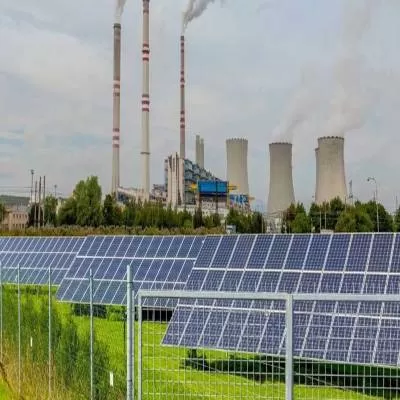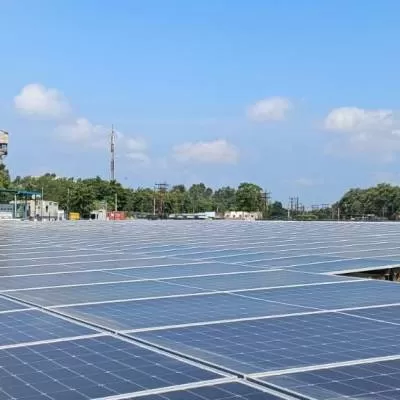Schedule a Call Back
India’s Renewable Energy Capacity Achieves Historic Surge in FY 2024–25
 India’s renewable energy sector has recorded an exceptional year of growth in FY 2024–25, with the Ministry of New and Renewable Energy (MNRE) announcing a historic annual capacity addition of 29.52 GW. As of 31st March 2025, the nation’s total installed renewable energy (RE) capacity has reached an impressive 220.10 GW, a significant leap from 198.75 GW in the previous fiscal.
India’s renewable energy sector has recorded an exceptional year of growth in FY 2024–25, with the Ministry of New and Renewable Energy (MNRE) announcing a historic annual capacity addition of 29.52 GW. As of 31st March 2025, the nation’s total installed renewable energy (RE) capacity has reached an impressive 220.10 GW, a significant leap from 198.75 GW in the previous fiscal.
This milestone marks a strong stride towards India’s climate commitments under the ‘Panchamrit’ agenda articulated by Prime Minister Shri Narendra Modi, particularly the goal of achieving 500 GW of non-fossil fuel-based capacity by 2030.
Solar Energy Leads the Charge Solar energy has been the primary driver of this year’s progress, contributing 23.83 GW to the total capacity—an increase of over 58% from the 15.03 GW installed in FY 2023–24. India’s cumulative solar capacity now stands at 105.65 GW. This comprises 81.01 GW from ground-mounted solar parks, 17.02 GW from rooftop solar, 2.87 GW from hybrid project components, and 4.74 GW from off-grid systems.
The figures reflect not only the rapid scaling of utility-scale projects but also the growing uptake of decentralised, distributed solar solutions.
Wind Energy Crosses 50 GW Landmark Wind power has continued its steady ascent with the addition of 4.15 GW in FY 2024–25, up from 3.25 GW the previous year. India’s total installed wind capacity now stands at 50.04 GW—an important milestone that further consolidates the sector’s pivotal role in the country’s renewable energy mix.
Bioenergy and Small Hydro Remain Vital Contributors Bioenergy has maintained its momentum, with total installed capacity reaching 11.58 GW, including 0.53 GW from off-grid and waste-to-energy initiatives. Small Hydro Power (SHP) projects have achieved a combined capacity of 5.10 GW, with an additional 0.44 GW currently under implementation. These segments continue to play a critical role in decentralised, sustainable energy supply, especially in remote and hilly regions.
Clean Energy Pipeline Expands Significantly In addition to installed capacity, India now boasts an extensive pipeline of 169.40 GW of renewable energy projects under implementation, alongside 65.06 GW that have already been tendered. These include 65.29 GW from advanced configurations such as hybrid systems, round-the-clock (RTC) power, peaking power, and thermal-renewable bundling schemes—designed to bolster grid reliability and ensure continuous clean power supply.
Driving Forward to 2030 Goals Under the leadership of Union Minister for New and Renewable Energy, Shri Pralhad Joshi, the MNRE has spearheaded several strategic initiatives to accelerate India’s energy transition. The robust performance in FY 2024–25 reflects not only the sector’s resilience and adaptability but also the government’s unwavering commitment to enhancing energy security and meeting international climate targets.
India’s renewable energy journey continues to set global benchmarks, positioning the country as a leader in the transition to a low-carbon future.


Subscribe Now
Subscribe to our Newsletter & Stay updated
RECENT POSTS
Popular Tags
Folliow us
Related Stories
Mumbai’s Carnac Bridge Renamed Sindoor After Operation Sindoor
The newly constructed Carnac Bridge in Mumbai, now officially renamed as Sindoor Bridge, was inaugurated on July 10, 2025, by Maharashtra Chief Min...
Titagarh Rail to Raise Funds via Preferential Issue of Warrants
Titagarh Rail Systems Limited has announced plans to raise ~Rs 2 billion through a preferential allotment of 21,16,402 convertible warrants to me...









